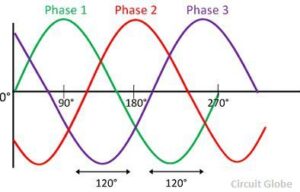- Demo Tester Page-OMCT
- dxecfc
- VIEW ALL- TESTER PAGE
- TECHNOLGY-TESTER PAGE
- TRAINING-TESTER PAGE
- CONUSLTING-TESTER PAGE
- UI XI Design Software-tester
- Game App Development-tester
- Mobile App Development-tester
- Data Management Service-tester
- Website Development-tester
- API Development Services-tester
- demo-tester-page-AR
- ui-xi-design-software-tester-AR
- game-app-development-tester-AR
- mobile-app-development-tester-AR
- data-management-service-tester-AR
- website-development-tester-AR
- api-development-services-tester-AR
- Payment Terms & Conditions
- Home Page
- Contacts
- Blog
- About Us
- Typography
- Blocks
- Home Page – English
OrientMCT
Three-Phase Systems
Three-phase systems are a type of electrical power distribution system that uses three alternating currents (phases) that are offset by 120 degrees from each other. This system is widely used in industrial, commercial, and residential applications due to its advantages over single-phase systems. Here are some key points about three-phase systems:
Phases: A three-phase system consists of three conductors, typically labeled as Phase A, Phase B, and Phase C. Each phase carries an alternating current, and the voltage waveforms of the three phases are offset by 120 degrees from each other.
Balanced Load: In a balanced three-phase system, the loads are evenly distributed among the three phases. This ensures that the currents flowing through each phase are equal, resulting in a balanced and efficient power distribution. Unbalanced loads can lead to uneven current distribution and potential issues with voltage stability.
Power Generation: Three-phase power is generated by power stations and distributed through transmission and distribution networks. The power generated is more efficient and can handle higher loads compared to single-phase systems. It is commonly used for heavy machinery, motors, and industrial equipment.
Motor Operation: Three-phase systems are commonly used to power motors, especially in industrial applications. Three-phase motors are more efficient and have higher starting torque compared to single-phase motors. They are widely used in various applications, including pumps, compressors, conveyor systems, and manufacturing machinery.
Voltage and Power: Three-phase systems can provide higher power capacity compared to single-phase systems. The power delivered by a three-phase system is the square root of 3 (√3) times the product of the line-to-line voltage and current. This higher power capacity allows for the operation of larger and more demanding equipment.
Symmetry: Three-phase systems exhibit a high degree of symmetry, which simplifies their analysis and makes them more reliable. The balanced and symmetrical nature of three-phase power distribution reduces the likelihood of voltage drops and imbalances.
Transmission Efficiency: Three-phase systems are more efficient for power transmission over long distances compared to single-phase systems. The three-phase power transmission results in lower line losses and allows for higher power transfer.
Transformers: Three-phase systems commonly use three-phase transformers for stepping up or stepping down voltage levels. These transformers are designed to handle the three-phase power and provide the required voltage levels for various applications.
Understanding three-phase systems is important for electrical engineers, technicians, and anyone involved in electrical power distribution and utilization. Proper installation, maintenance, and troubleshooting of three-phase systems require knowledge of their characteristics, wiring configurations, and associated equipment. Following safety protocols and electrical codes is crucial when working with three-phase systems to ensure safe and reliable operation.

Get In Touch!
Contact us for a quote or in case of any urgent queries please send us an email on: [email protected]
we will get back to you right away!